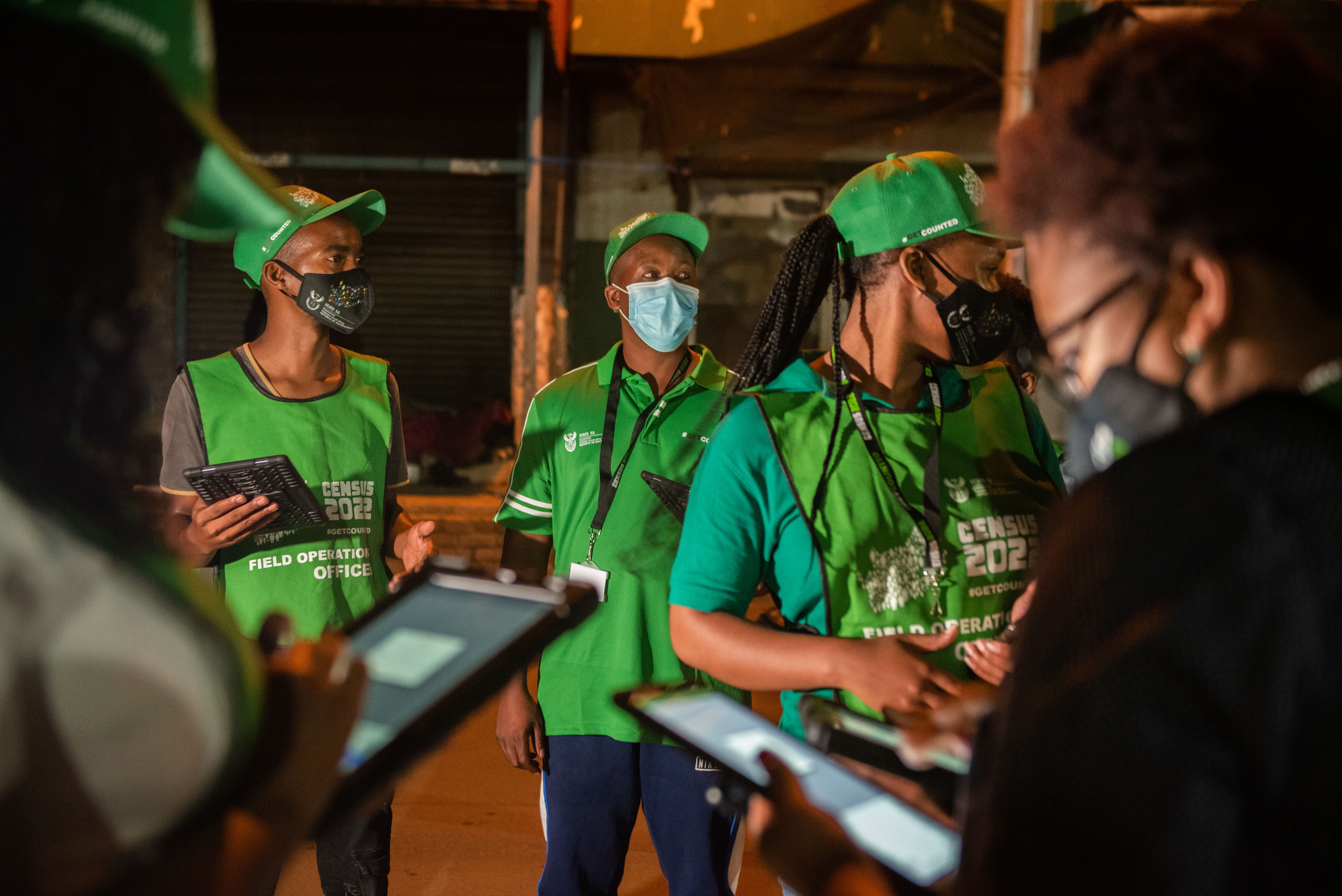Statistics South Africa on Tuesday, 10 October, revealed the findings of the long-awaited Census 2022, which was delayed by the Covid-19 pandemic and subsequent lockdowns, and hindered further by the July riots in 2021 and the flooding in KwaZulu-Natal last year.
Read more in Daily Maverick: SA’s population has increased to 62 million — a challenge for government to provide basic services
Below are some of the biggest takeaways from the new data.
Population boom
South Africa’s population on 2 February 2022 was 62 million people — 10.2 million more than were counted in the 2011 census.
Gauteng is the most populous province (15.1 million), ballooning from 12.2 million in 2011. Northern Cape is the least populated province (1.4 million).
All South Africa’s nine provinces experienced an uptick in population.
The census revealed that 81.4% of the population were black Africans, a slight increase since 2011 (79.2%). The country’s coloured population percentage declined slightly, from 8.9% in 2o11 to 8.1% in 2022. The white population also continued its downward trend, from 8.9% in 2011 to 7.3% in 2022.
The census data show that in 2022 there were more women (51.5%) in South Africa than men (48.5%).
Education
Mpumalanga and Limpopo had the highest percentage of people with no schooling (11.7% and 14.1%, respectively), which was above the national average of 6.9%.
The lowest percentage of people with no education was in the Western Cape (2.3%), followed by Gauteng (3.9%).
The census found nearly 2.6 million people in SA aged 20 years and older had no schooling, while 1.3 million had completed primary education.
Access to basic services
There was an increase in the number of households residing in formal dwellings — up by 10.9 percentage points from 2011 to 2022.
According to the StatsSA 2022 census report, formal dwellings included formal houses with a “brick/concrete structure, flats and apartments, cluster homes, townhouses, semi-detached houses or any formal dwelling situated in a backyard, such as a room or garden cottage where a household or single person resides”.
The proportion of households that resided in informal dwellings halved from 16.2% in 1996 to 8.1% in 2022.
In 2022, 59.7% of households in South Africa had access to piped water inside their dwellings, while 22.7% had access to piped water inside their yards.
The percentage of households that reported having no access to piped water decreased from 8.8% in 2011 to 8.7% in 2022.
The 2022 census found that electricity was the main source of power for lighting across all provinces.
The use of electricity for light was most prevalent in the Western Cape (96.5%) and KwaZulu-Natal (96.7%), and least prevalent in the Northern Cape (92.5%) and Gauteng (93.2%).
Languages
isiZulu remained the most spoken language in SA (24.4% of households).
The second most spoken language was isiXhosa (16.3%), followed by Afrikaans (10.6%).
The number of isiZulu and isiXhosa-speaking households increased from 2011 to 2022, while the number of Afrikaans-speaking households declined from 13.5% in 2011 to 10.6% in 2022.
Migration
The 2022 census showed that there were more than 2.4 million international migrants in South Africa, equating to 3% of the total population.
Most came from the Southern African Development Community (SADC) region (86%). Of these, 45.5% were from Zimbabwe, followed by Mozambique with 18.7% and Lesotho with 10.2%.
The top five “sending countries” to South Africa are Zimbabwe, Mozambique, Malawi, Lesotho and the UK.
Homelessness
Around 55,719 people were recorded as homeless in South Africa in 2022. Of these, 11,207 were in shelters, while 44,512 were roofless.
Census 2022 findings showed that homelessness was more prevalent in metropolitan areas (74.1%). The City of Tshwane recorded the highest proportion of homeless people (18.1%), followed by the City of Johannesburg (15.6%).
Nelson Mandela Bay recorded the lowest proportion of homeless people (2.7%).
The leading reason people gave for their homelessness was that they had lost their job, had no job or no income (41.3%). This was followed by drug and alcohol abuse at 25%.
DM




